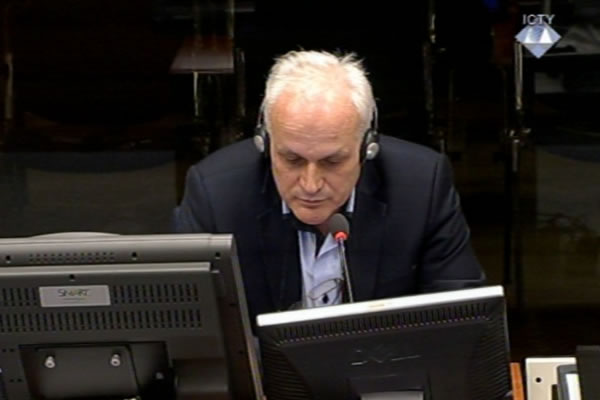Home
COUNTING BODIES AT MARKALE
Based on the hospital records, Ratko Mladic’s defense counsel established that 39 persons were killed at the Markale market in February 1994, not 67, as was established by Edin Suljic, an inspector in the Sarajevo Security Services Center. The defense contends that the BH authorities ‘exerted a lot of pressure’ on the Security Services Center staff working on the investigation, in order to ‘massage the figures for the casualties’: ‘to increase the number and use it in propaganda against Serbs’
 Edin Suljic, witness at the Ratko Mladic trial
Edin Suljic, witness at the Ratko Mladic trial Edin Suljic testified at the trial of the former commander of the VRS Main Staff Ratko Mladic. From September 1993 to May 1995, Suljic worked in the Sarajevo Security Services Center as an inspector in the War Crimes and Genocide Department. Suljic participated in the investigations of the shelling of the Markale market on 5 February 1994 and the sniping attacks on two trams in Marindvor on 8 October 1994. The transcript of Suljic’s evidence at the trial of Stanislav Galic in 2002 was admitted into evidence.
When the incident at the Markale market happened, Suljic first went to the scene and then to the Kosevo Hospital to try to identify the dead and injured. During the investigation, based on the information from the Kosevo Hospital and the State Hospital, as well as the UN infirmary, Suljic was able to establish that 67 persons were killed and 142 wounded in Markale. According to the findings of the Sarajevo Security Services Center team, the shell was fired from the direction of the VRS positions on Mrkovici.
In the cross-examination, Mladic’s defense counsel Dragan Ivetic presented his ‘calculation’ of the number of victims of the Markale incident. By looking into the hospital records, the defense counsel established that ‘no more than’ 39 people had been killed and 120 persons wounded. The defense counsel also referred to the Security Services Center report which had an attachment with the photos of 39 victims. Asked where the photos of the other victims were, the witness replied that other members of the investigation team were in charge of that task. However, he could say ‘with certainty’ that he had counted around 60 dead bodies in the morgue. According to the witness, ‘the family members most probably took the bodies of their relatives from the morgue and the photographer didn’t have time to photograph them’.
Confronted with several documents in which the figures for the casualties at Markale differed, Suljic explained that the data kept coming in until the end of the investigation, and the figures changed as new findings came in. The number of victims of the Markale incident rose ‘by the hour’ as some victims passed away en route to hospital or after they were admitted, Suljic noted.
Judge Orie advised the defense counsel Ivetic to clearly put the defense argument to the witness. The defense counsel did so, saying that the BH authorities exerted ‘a lot of pressure’ on the Security Services Center staff who worked on the Markale incident investigation. According to the defense, their ‘intent was to massage the figures for the victims’, or to ‘increase the number and use it as propaganda against Serbs’. Suljic dismissed the suggestion, saying that the only pressure his team was under was to collect as many facts and evidence as possible as soon as possible. ‘Any other kind of pressure was ruled out’, the witness stated.
Suljic also dismissed the defense argument that the trams in Marindvor were hit as the two warring factions exchanged fire, given that they were close to the demarcation line. Suljic noted that as a rule trams operated during cease-fires. As he explained, the investigation revealed that the fire had been opened from a skyscraper in Grbavica which was under the VRS control; the weapon was a machine gun nicknamed ‘the death sower’.
